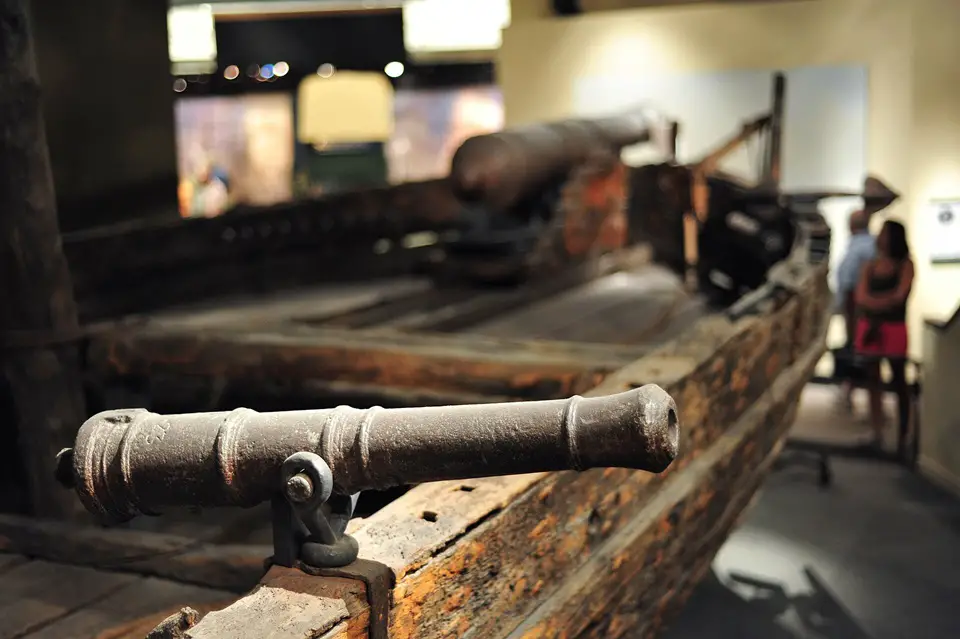Archaeologists from the Centre for Maritime Archaeology and Conservation (CMAC) at Texas A&M University have carried out a study of the wreck site of the Philadelphia, a Revolutionary War gunboat.
The USS Philadelphia was a 3-gun gundalow of the Continental Navy that fought against the British Royal Navy in the Battle of Valcour Island on Lake Champlain.
The battle is generally regarded as one of the first naval battles of the American Revolutionary War. Most of the ships in the Continental Navy were either captured or sunk, including the Philadelphia under the command of Captain Benjamin Rue.
Nearly 160 years later, in 1934, Philadelphia was raised from the lake and is now preserved at the Smithsonian’s National Museum of American History. Yet, despite its recovery, the original wreck site continues to yield important clues about 18th-century naval warfare.
In a new study led by Drs. Carolyn Kennedy and Christopher Dostal, the CMAC team carried out systematic dives and metal detection surveys at the site.
Their mission was to map the distribution and condition of artefacts that remain on the lakebed, as well as map any remaining fragments of the hull structure.
“By carefully recording artefact scatter patterns and remnants of hull structure, ordnance, and other associated materials, the project aims to enrich historical understanding and interpretation of this pivotal chapter in American naval history,” said a representative from CMAC.
The study is part of a broader initiative preparing for the 250th anniversary of the Battle of Valcour Island in 2026.
Header Image Credit : Eric Chan – CC BY 2.0
Sources : CMAC





